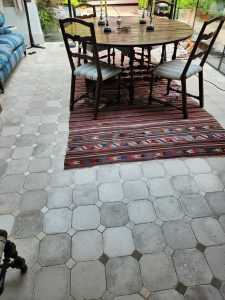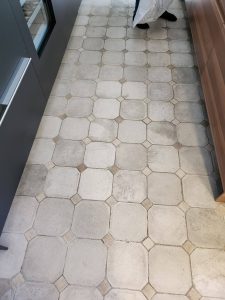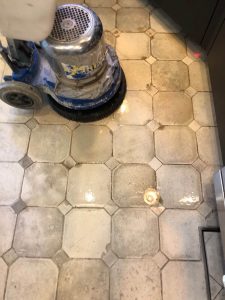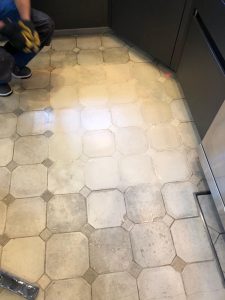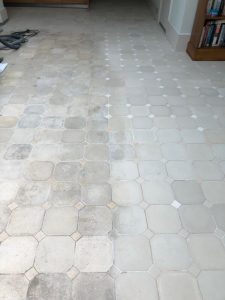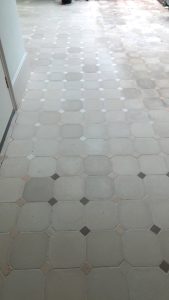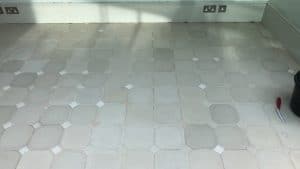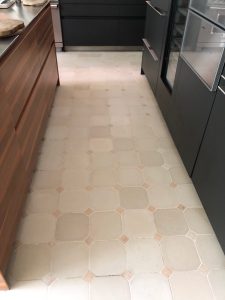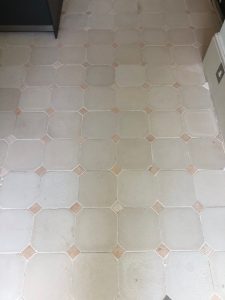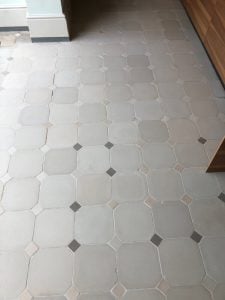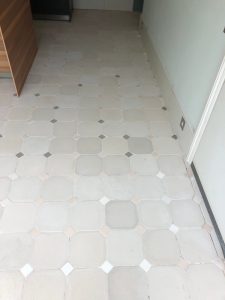Description: Clean limestone floor
Location: Holland Park, London
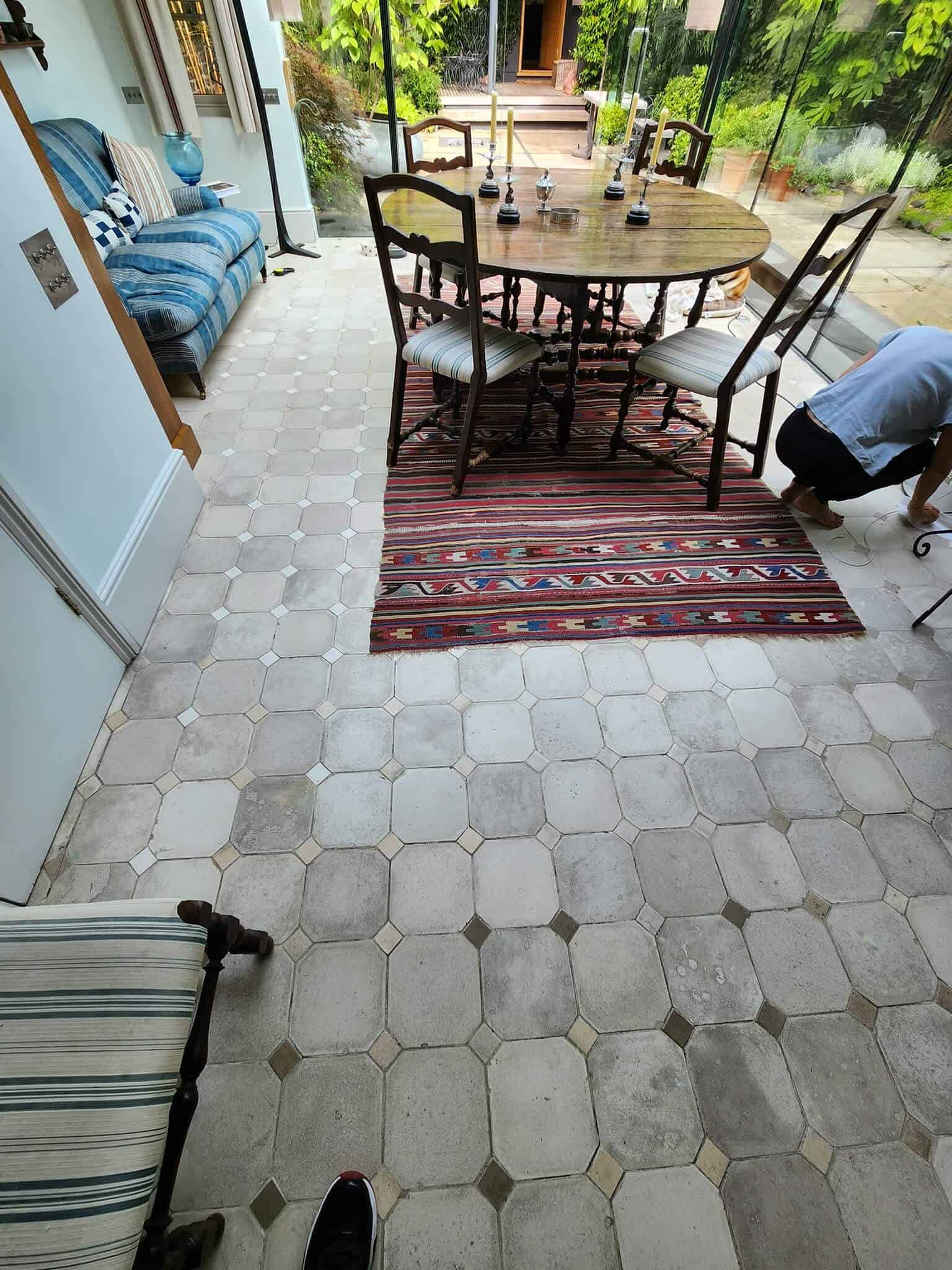


Reviving the Elegance of Limestone Floors: A Chemical and Mechanical Cleaning Process
Limestone floors exude timeless beauty and sophistication, but over time, they can accumulate dirt, stains, and wear that can dull their natural allure. Restoring the pristine condition of your limestone floor involves a meticulous cleaning process that combines chemical and mechanical methods. In this description, we will outline how to effectively clean a limestone floor using an alkaline-based cleaner and abrasive floor pads while ensuring the integrity of the stone’s surface with an impregnator sealant.
- Step 1: Surface Preparation
Before diving into the cleaning process, it’s essential to prepare the surface. Remove all furniture and debris from the area, ensuring a clear workspace. Dust and sweep the floor to eliminate loose dirt and particles that could scratch the surface during the cleaning process. - Step 2: Safety Precautions
Always wear appropriate personal protective equipment (PPE) when working with chemicals. This includes gloves, goggles, and a well-ventilated workspace. - Step 3: Selecting the Right Cleaner
Choose an alkaline-based cleaner that is specifically designed for use on limestone floors. Alkaline-based cleaners are effective in breaking down and removing dirt and stains while being gentle on the stone’s surface. Dilute the cleaner as per the manufacturer’s instructions to avoid any damage to the stone. - Step 4: Application of the Cleaner
Apply the alkaline-based cleaner evenly across the limestone floor. Use a mop or a soft brush to spread the solution, ensuring thorough coverage. Allow the cleaner to sit for the recommended dwell time, typically 5-10 minutes, but always follow the product’s specific instructions. - Step 5: Mechanical Agitation
To tackle stubborn stains or deeply embedded dirt, use abrasive floor pads in combination with a floor buffer machine. These pads come in various grit levels, with higher grits being more abrasive. Begin with a less abrasive pad and gradually work your way up to a finer pad if necessary. The mechanical agitation, in conjunction with the cleaner, will help lift away impurities from the surface of the limestone. - Step 6: Rinsing and Extraction
After mechanically agitating the floor, thoroughly rinse the surface with clean water to remove any remaining cleaner and residue. Use a wet vacuum or mop to extract the rinse water to prevent any leftover dirt from settling back on the floor. - Step 7: Drying
Allow the limestone floor to air dry or use a dry mop or towels to speed up the drying process. - Step 8: Application of Impregnator Sealant
To preserve the cleanliness and protect the limestone floor, apply an impregnator sealant. This sealer will penetrate the stone, creating a protective barrier against future stains and spills without altering the stone’s appearance. Follow the manufacturer’s instructions for the correct application and drying time.
Conclusion:
The chemical and mechanical cleaning process, using an alkaline-based cleaner and abrasive floor pads, can effectively rejuvenate a limestone floor’s beauty. The application of an impregnator sealant after cleaning ensures long-lasting protection while maintaining the stone’s natural elegance. With proper care and maintenance, your limestone floor will continue to be a stunning focal point of your space for years to come.


